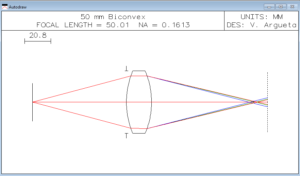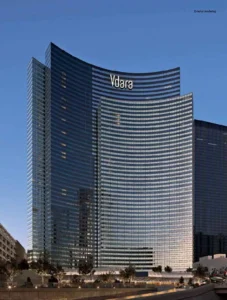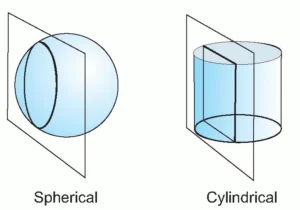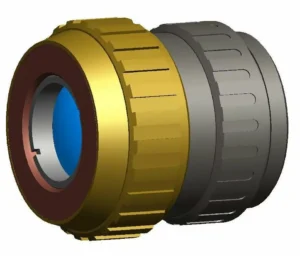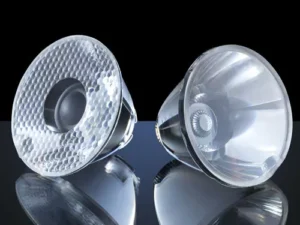Liquid lenses, are a type of optical lens that have a tunable focal length by shaping a liquid electronically. These lenses can be based on voice coil actuation, or based on electrowetting technology, which involves manipulating the surface tension of a conductive liquid droplet by applying an electric field.
The core component of an electrowetting-based is a transparent container filled with two immiscible liquids, typically water and oil, with the conductive liquid droplet residing between them. The droplet acts as a lens by controlling the curvature of its surface. By applying voltage to the conductive droplet, the shape of the droplet can be modified, allowing for adjustments in the focal length.
One of the significant advantages of liquid lenses is their ability to change focus rapidly and smoothly, making them suitable for applications such as image stabilization, barcode scanning, and auto-focus in cameras and microscopes. They offer a compact and robust alternative to traditional mechanical lens systems.
While liquid lenses offer unique advantages, they also come with a few challenges and limitations. Here are some of the problems that can arise when working with liquid lenses:
Optical Performance: liquid lenses may have limitations in terms of optical performance compared to conventional lenses. They can exhibit certain optical aberrations, such as spherical aberration, astigmatism, or distortion, which can affect image quality. The resolution and clarity of the images obtained with liquid lenses may not be as high as those achieved with traditional lenses.
Limited Aperture: liquid lenses typically have a fixed aperture, which means they may not be able to achieve very wide or very narrow aperture settings. This limitation can impact the control of depth of field and the amount of light entering the lens.
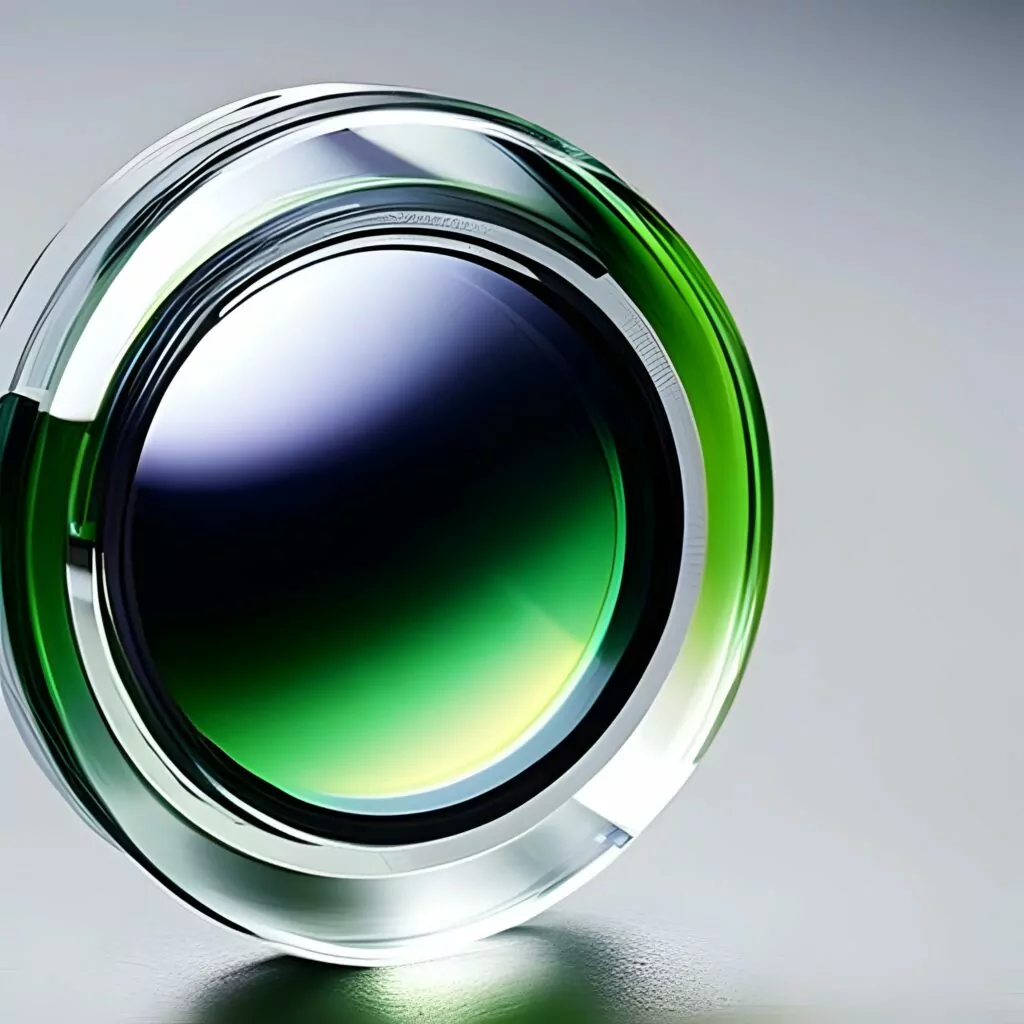
This allows for dynamic focusing and zooming, making liquid lenses useful in microscopy, machine vision, and mobile cameras
To overcome the limitations of liquid lenses, several approaches can be considered. One important approach is through careful design of an add-in optical component. Through careful optical design, it is possible to compensate for some of the inherent aberrations and limitations of liquid lenses.
Advanced optical modeling and simulation techniques can be employed to optimize the lens design, minimize aberrations, and improve overall image quality. This can involve using additional optical elements or incorporating software algorithms for image correction and enhancement.
For example, at OFH, we embarked on a collaborative endeavor with a client to address the specific performance requirements of a liquid lens within a particular system. Our client presented us with the task of a specific combination of focal length (FL), F-number (F#) and MTF performance for a unique set of liquid lenses.
To meet this demand, we devised a comprehensive solution by incorporating an advanced system, as depicted in Figure 2. Through this integration, we successfully achieved a focal length of 12.5 mm and an F-number of 6.6, aligning with the client’s specifications.
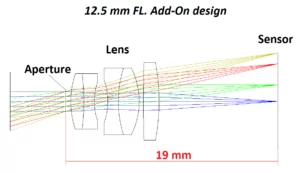
By carefully configuring the components and optimizing their interactions, we were able to achieve improvements in the lens’s performance. The primary objective was to achieve a specific focal length simultaneously and F-number to enhance the system’s overall imaging capabilities.
Through this collaboration, we were able to provide our client with a tailored solution that met their expectations. The integration of the advanced system, as exemplified in Figure 2, demonstrated the potential for pushing the boundaries of liquid lens capabilities and unlocking new opportunities for diverse applications.
Brands
Varioptic lenses and Optotune lenses, as well as TAG Optics, are brands of liquid lenses on the market. These types of adaptive lenses can change the focal length and provide variable focus capabilities. However, they differ in their underlying technology and the mechanisms by which they achieve this adaptive functionality. Let’s compare them in various aspects:
1. Technology:
– Varioptic lenses: Varioptic lenses are based on the principle of electrowetting. They consist of a transparent liquid droplet that is enclosed between two immiscible fluids, typically water and oil. By applying an electric field across the droplet, the contact angle between the liquids can be modified, thereby changing the curvature of the lens and its focal length.
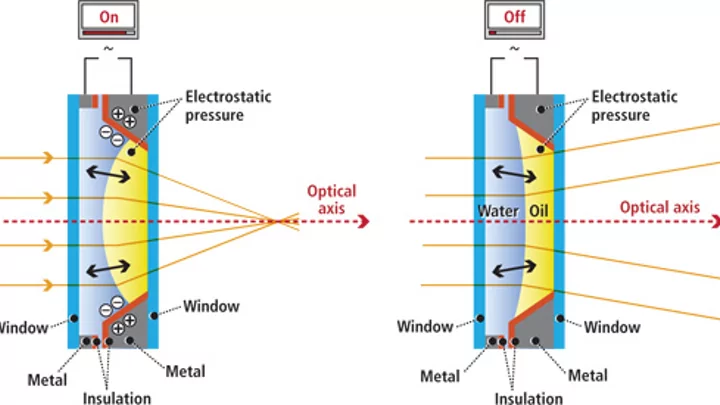
– Optotune lenses: Optotune lenses are shape-changing lenses based on a combination of optical fluids and a polymer membrane. The core element consists of a container, which is filled with an optical liquid and sealed off with a thin, elastic polymer membrane which is pushed by a circular ring that shapes the tunable lens. The change in shape alters the curvature of the lens, leading to a variation in its focal length.
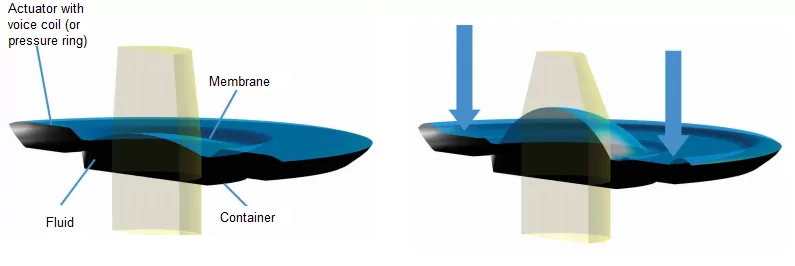
– TAG Optics (now owned by Mitutoyo) uses the acousto-optical technique. This lens is a type of gradient index of refraction (GRIN) lens – it uses standing sound waves to produce a constantly changing gradient index of refraction within a liquid contained in the lens (Figure3). The sound waves send a vibration through the liquid, forcing the molecules to move closer together. It allows changes in the refraction index of the material, depending on the sound wave location. By controlling the shape and location of these sound waves, it is possible to establish an index of refraction profile that looks like a simple lens in the center.
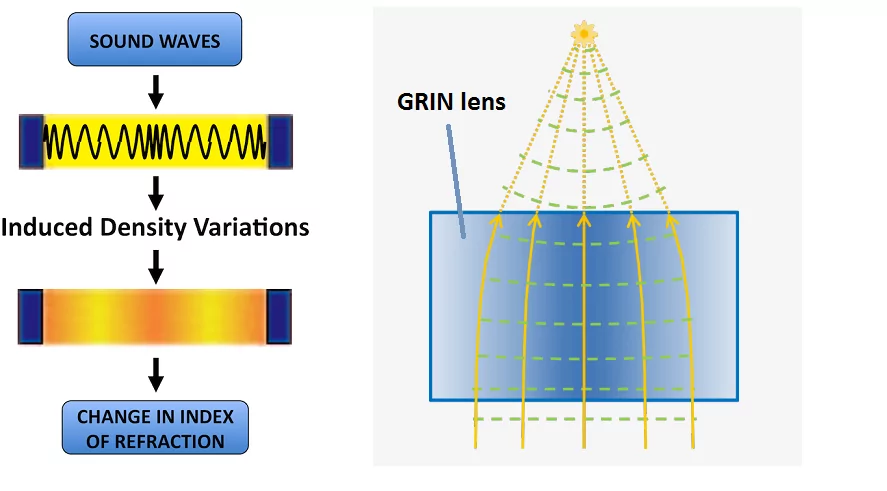
2. Response Time:
– Varioptic lenses: Varioptic lenses typically have fast response times, often in the range of milliseconds. They can rapidly change their focal length, making them suitable for applications that require quick adjustments.
– Optotune lenses: Optotune lenses have faster response times compared to Varioptic lenses, typically in the range of a few milliseconds. The shape changing mechanism is often faster than the electrowetting technology. For example the response of Optotune EL-3-10 is 3-4ms while the response of Varioptics A-25H is 100ms!
– TAG Optics lenses: TAG Optics lenses, which use Tunable Acoustic Gradient technology, offer even faster response times compared to both Varioptic and Optotune lenses. These lenses can change focus in microseconds (µs), making them ideal for high-speed imaging and applications requiring real-time focusing adjustments. Their response time is on the order of 70-100 µs, significantly outperforming traditional liquid lens technologies in dynamic focusing scenarios.
3. Power Consumption:
– Varioptic lenses: Electrowetting-based lenses, such as Varioptic lenses, are known for their low power consumption. They require power only during the focal length adjustment process and can maintain their focal length without continuous power input.
– Optotune lenses: Optotune lenses can consume higher power compared to electrowetting lenses. Since they rely on applying an electric current to push the lens shaper, they require a continuous power source to maintain the adjusted focal length
– TAG Optics lenses: TAG Optics lenses also exhibit low power consumption similar to Varioptic lenses. Their Tunable Acoustic Gradient technology allows for power-efficient operation, as they can maintain their focal length without needing constant power input. This feature makes them suitable for battery-operated devices and applications where power efficiency is crucial. Additionally, their rapid response times mean they can achieve adjustments quickly, reducing the overall power needed for operations.
4. Optical Performance:
– Varioptic lenses: Varioptic lenses offer good optical performance, with low aberrations and good image quality. They can provide a relatively large range of focal lengths, making them suitable for various imaging applications.
– Optotune lenses: Optotune lenses also provide good optical performance, with a bigger clear aperture and focal length range. Optotune lenses can have a clear aperture up to 50mm. However, due to the very small capillary forces, the electrowetting technology only allows for up to about 6mm apertures
– TAG Optics lenses: TAG Optics lenses deliver comparable optical performance with low distortion and high image clarity. They utilize Tunable Acoustic Gradient technology, allowing for significant flexibility in focal length adjustments while maintaining a clear aperture that can compete with Optotune lenses. This makes TAG Optics lenses ideal for applications that require precise optical performance, such as imaging and projection systems. Their design also minimizes optical aberrations, ensuring high-quality images across various focal lengths.
Conclusions
In summary, Varioptic lenses, Optotune lenses, and TAG Optics lenses are all adaptive lenses capable of changing their focal length to meet specific application needs.
- Varioptic lenses utilize electrowetting technology, offering fast response times, low power consumption, and good optical performance.
- Optotune lenses are shape-changing lenses based on voice coil actuation, featuring slightly faster response times, larger clear apertures, but higher power consumption.
- TAG Optics lenses leverage Tunable Acoustic Gradient technology, delivering comparable optical performance with low distortion and high image clarity. They offer flexibility in focal length adjustments while maintaining a clear aperture suitable for various applications.
The choice between these types of tunable lenses ultimately depends on the specific requirements of your application.
Which type of tunable lens is best for your application will depend on your system requirements.
Need assistance designing a custom optic or imaging lens? Learn more about our design services here.
